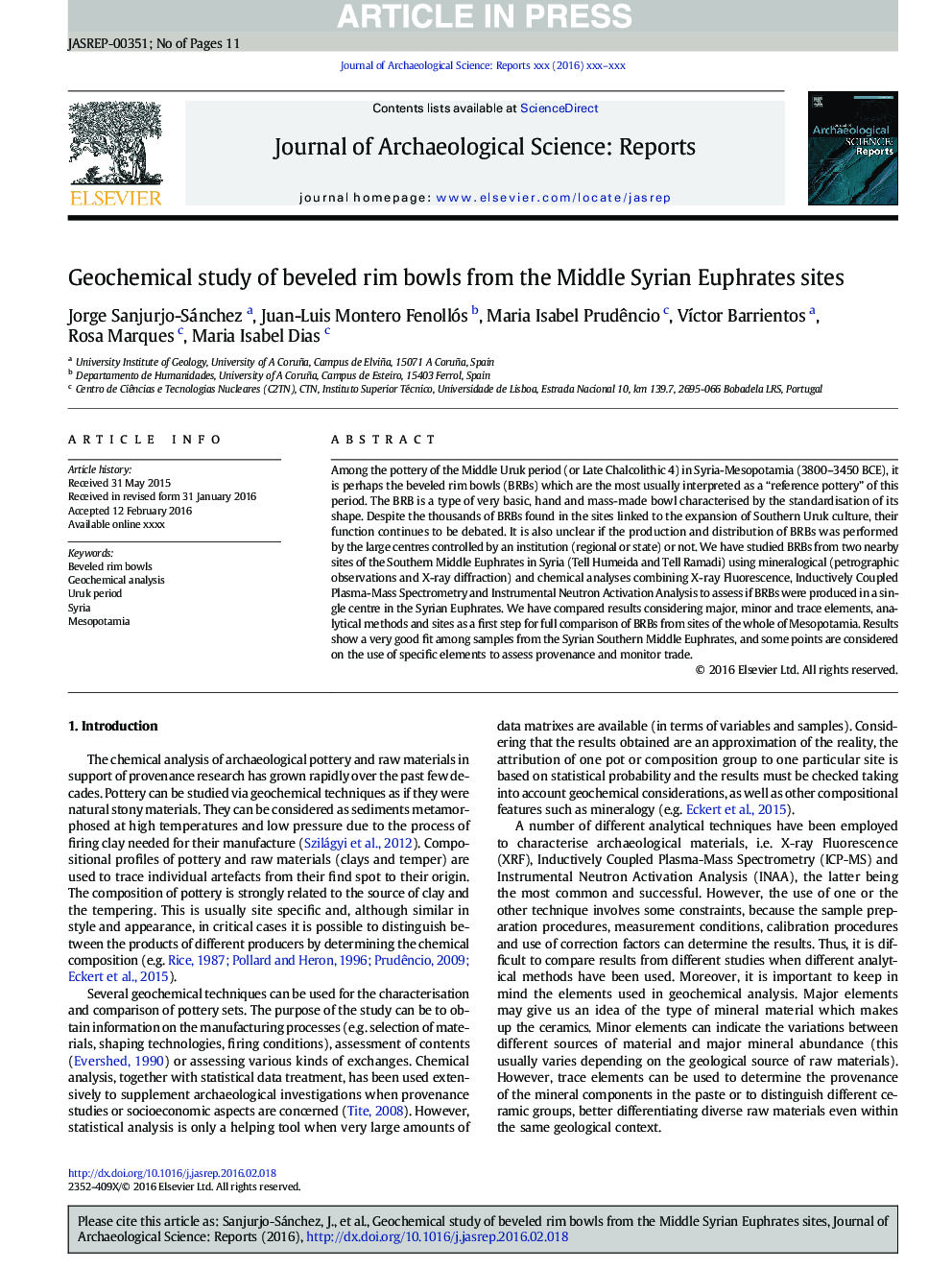| Article ID | Journal | Published Year | Pages | File Type |
|---|---|---|---|---|
| 10499973 | Journal of Archaeological Science: Reports | 2016 | 11 Pages |
Abstract
Among the pottery of the Middle Uruk period (or Late Chalcolithic 4) in Syria-Mesopotamia (3800-3450Â BCE), it is perhaps the beveled rim bowls (BRBs) which are the most usually interpreted as a “reference pottery” of this period. The BRB is a type of very basic, hand and mass-made bowl characterised by the standardisation of its shape. Despite the thousands of BRBs found in the sites linked to the expansion of Southern Uruk culture, their function continues to be debated. It is also unclear if the production and distribution of BRBs was performed by the large centres controlled by an institution (regional or state) or not. We have studied BRBs from two nearby sites of the Southern Middle Euphrates in Syria (Tell Humeida and Tell Ramadi) using mineralogical (petrographic observations and X-ray diffraction) and chemical analyses combining X-ray Fluorescence, Inductively Coupled Plasma-Mass Spectrometry and Instrumental Neutron Activation Analysis to assess if BRBs were produced in a single centre in the Syrian Euphrates. We have compared results considering major, minor and trace elements, analytical methods and sites as a first step for full comparison of BRBs from sites of the whole of Mesopotamia. Results show a very good fit among samples from the Syrian Southern Middle Euphrates, and some points are considered on the use of specific elements to assess provenance and monitor trade.
Keywords
Related Topics
Social Sciences and Humanities
Arts and Humanities
History
Authors
Jorge Sanjurjo-Sánchez, Juan-Luis Montero Fenollós, Maria Isabel Prudêncio, VÃctor Barrientos, Rosa Marques, Maria Isabel Dias,
